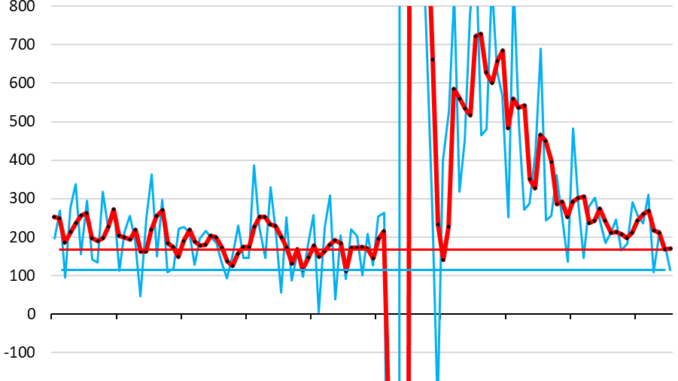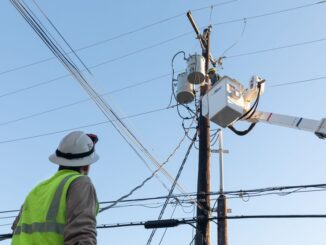
By Wolf Richter for WOLF STREET.
Payrolls at employers rose by 114,000 in July, below the growth in June and May. Back in April, job growth was even lower (108,000), and we went through the same handwringing. This rate of job growth remains well above the lower end of the scale during the Good Times in 2017-2019 (blue in the chart). The private-sector ADP National Employment Report showed job growth of 122,000 in July.
The three-month average — our preferred indicator because it includes all revisions and irons out the month-to-month squiggles — ticked up a hair from the prior month to 170,000 (red) and remains right in the middle of job growth during the Good Times in 2017 through 2019.
Total employment reached a record 158.7 million. Clearly, the growth in new jobs has slowed from the frenetic pace after the lockdowns and labor shortages, and has returned to the normal range with its big squiggles of the Good Times in 2017-2019.
Average hourly earnings increased by 2.8% annualized (0.23% not annualized) in July from June, below the rate in June and May, but above April, and right in the middle of the range of 2017-2019.
The three-month average, which includes revisions and irons out some of the month-to-month squiggles, accelerated a hair to a growth rate of 3.7% annualized (+0.31% not annualized), at the very top of the range during the 2017-2019 period. This is still relatively high wage growth, but way down from the frenetic pace in 2022 – and as Powell said at the press conference, no longer fuel for inflation.
The 12-month rate dipped to 3.6%, above the peaks of the 2017-2019 period, but barely, as wage growth has roughly normalized.
The headline unemployment rate (U-3) rose to 4.3%, which is still relatively low historically, but is up sharply from the period of the labor shortages in 2022.
This is also where the massive influx of immigrants over the past two years – estimated at 6 million by the Congressional Budget Office, using ICE data – shows up if they have not yet found a job, but are looking for a job:
The number of unemployed people looking for a job has risen to 6.87 million. At the low point during the labor shortages, the number of unemployed had dropped to 5.8 million.
The unemployment rate (above) accounts for the large-scale growth in the labor force over the decades; this metric here of the number of unemployed does not take into account the growth in the labor force.
So clearly, labor market growth has slowed. Growth in job creation by establishments has slowed from the frenetic pace of 2022 and 2023 but remains in the pre-pandemic range. Wages are growing at a normal-ish clip. And the massive influx of new workers into the labor force – from the 6 million immigrants over the past two years, as per the Congressional Budget Office – is being absorbed by the job market at a slower rate that doesn’t keep pace with the influx of these workers, and so the unemployment rate has risen, despite the increase in payrolls.
A recession in the US (which are called out by the NBER) generally includes actual declines in payrolls, but they’re still growing, even in July, though at a normal-ish clip; and quarter-to-quarter declines in GDP, but in Q2, GDP grew 2.8%, faster than the 10-year average after the more sluggish growth in Q1.
Enjoy reading WOLF STREET and want to support it? You can donate. I appreciate it immensely. Click on the beer and iced-tea mug to find out how:
Would you like to be notified via email when WOLF STREET publishes a new article? Sign up here.
Take the Survey at https://survey.energynewsbeat.com/





